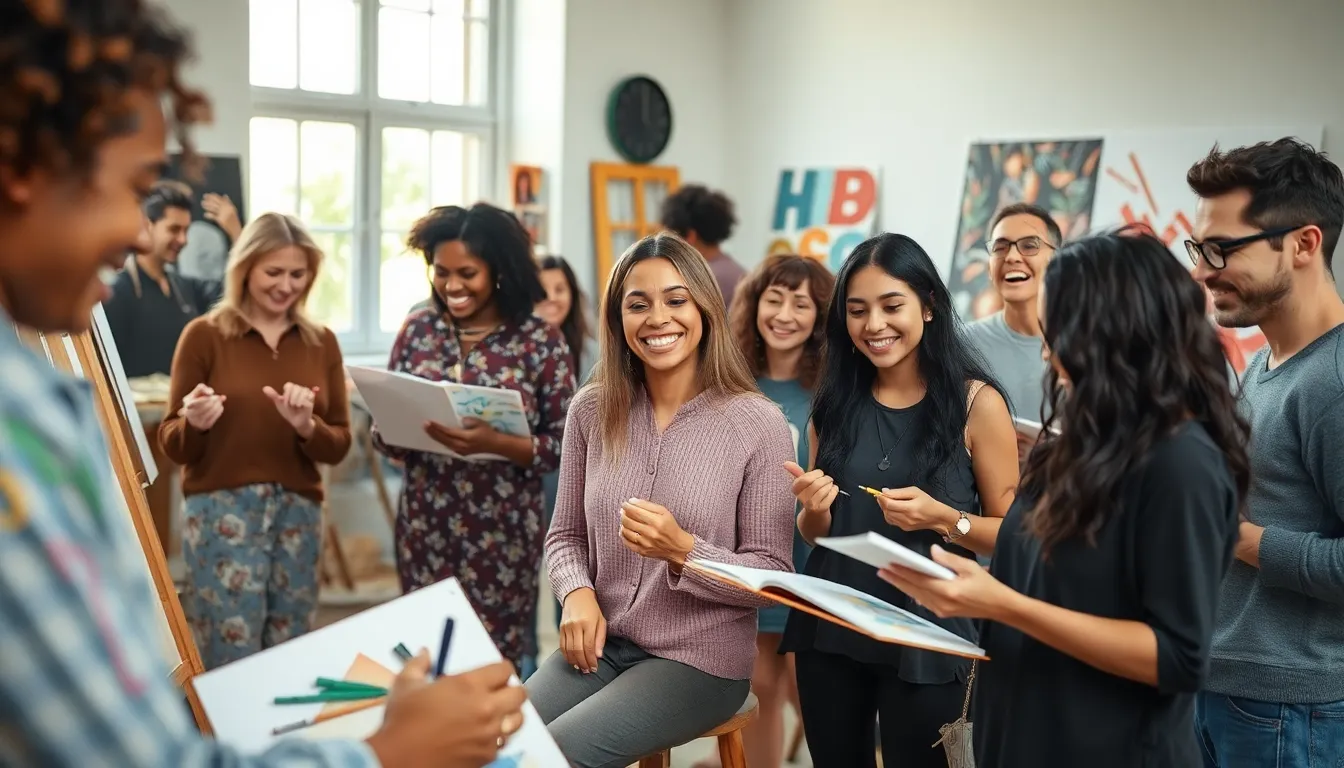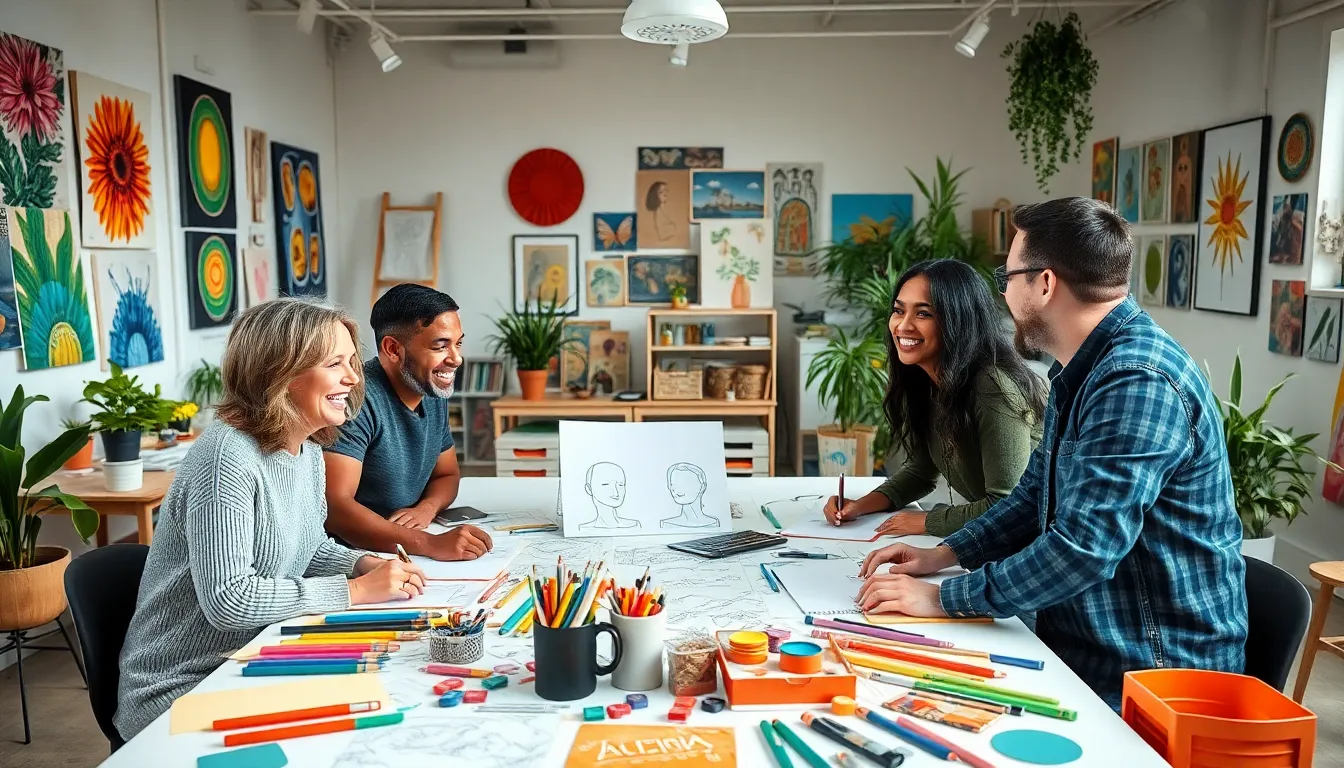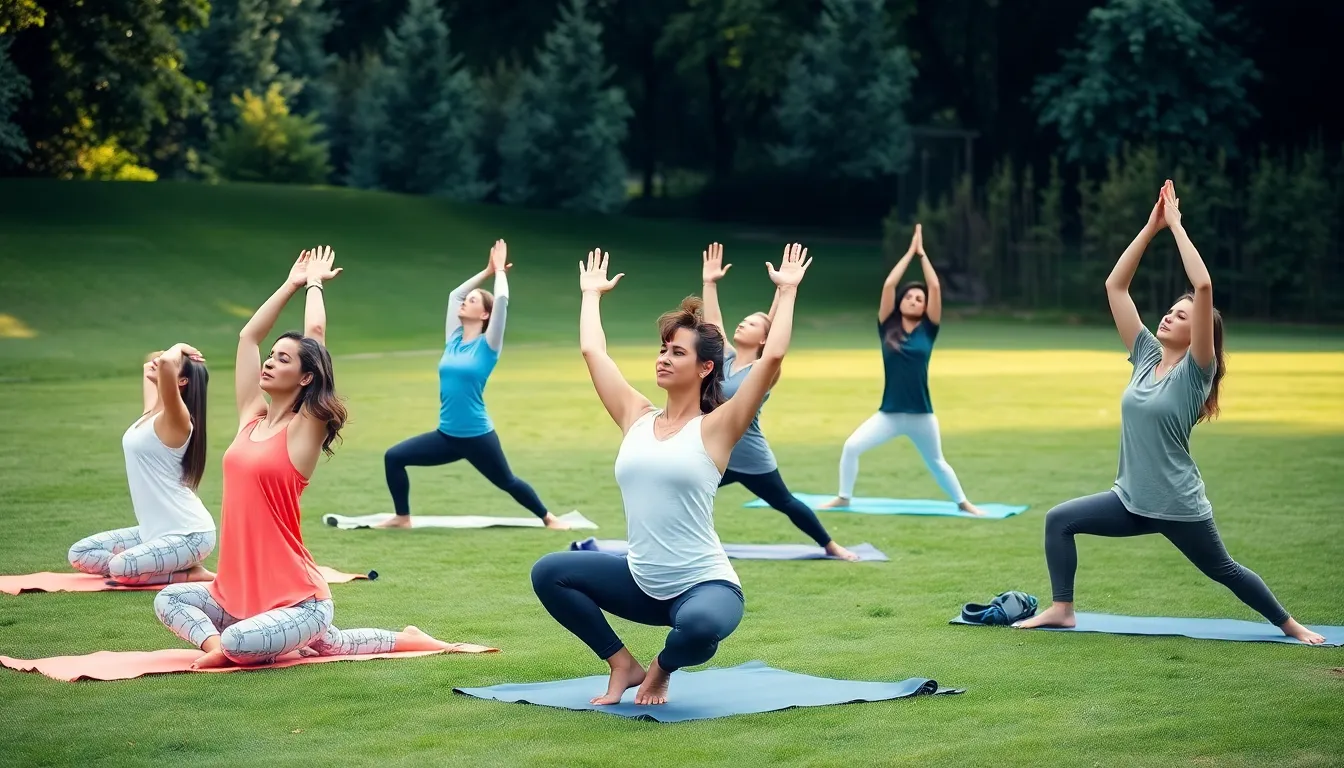In a world dominated by routine and structure, exercising creativity can feel like a breath of fresh air. It’s not just about artistic expression; it’s a vital skill that enhances problem-solving and innovation across various fields. By tapping into their creative potential, individuals can unlock new ways of thinking and approach challenges with a fresh perspective.
Whether it’s through brainstorming sessions, artistic pursuits, or even day-to-day activities, fostering creativity can lead to personal and professional growth. Engaging in creative exercises not only boosts mental agility but also cultivates a sense of fulfillment. Discovering simple yet effective ways to exercise creativity can transform how one navigates life’s complexities and opens doors to endless possibilities.
Table of Contents
ToggleUnderstanding Exercise Creativity
Exercise creativity involves actively engaging in activities that stimulate the mind and foster innovative thinking. This practice goes beyond mere artistic endeavors, incorporating a variety of approaches that enhance cognitive flexibility.
Definition of Exercise Creativity
Exercise creativity refers to the deliberate practice of activities designed to enhance creative thought. These activities may include brainstorming sessions, artistic endeavors, problem-solving tasks, and exploratory play. Engaging in such exercises strengthens the ability to generate original ideas, enabling individuals to think divergently and embrace new concepts.
Importance of Creativity in Daily Life
Creativity plays a vital role in daily life, impacting problem-solving skills and overall well-being. Enhanced creativity leads to improved adaptability in challenging situations, allowing individuals to devise effective solutions. Regularly exercising creativity boosts self-confidence and reduces stress, fostering mental resilience. In professional settings, creativity drives innovation, encouraging collaborative teamwork and novel strategies. The integration of creative thought enriches personal relationships, enhances communication, and supports emotional intelligence, ultimately transforming daily experiences into opportunities for growth.
Benefits of Exercising Creativity

Exercising creativity offers numerous advantages that enhance both mental well-being and cognitive abilities. Engaging in creative activities positively impacts various aspects of life, fostering personal and professional development.
Mental Health Improvements
Exercising creativity significantly boosts mental health. Activities like painting, writing, or dancing reduce anxiety and depression symptoms. Creative expression provides an outlet for emotions, leading to improved mood and increased feelings of fulfillment. Studies show that individuals who regularly engage in creative activities report lower stress levels and greater satisfaction with life. Moreover, creative practices enhance relaxation and mindfulness, promoting emotional regulation and resilience.
Enhanced Problem-Solving Skills
Exercising creativity enhances problem-solving skills by encouraging innovative thinking. Creative exercises stimulate divergent thinking, allowing individuals to generate multiple solutions for challenges. This ability to approach problems from various angles fosters adaptability and flexibility in decision-making. Research indicates that people who actively engage in creative pursuits develop improved critical thinking skills and can better navigate complex situations in both personal and professional settings. Embracing creativity leads to greater collaboration and communication, empowering individuals to work effectively in teams.
Techniques to Exercise Creativity
Various techniques enhance creativity, fostering innovative thinking and problem-solving skills. Engaging in structured activities can effectively stimulate the mind.
Engaging in Creative Hobbies
Engaging in creative hobbies opens avenues for self-expression and imaginative thinking. Activities such as painting, writing, or crafting allow individuals to explore new ideas and techniques. Regular participation in these hobbies leads to skill improvement and boosts confidence.
- Painting: Using paints, brushes, and canvases helps develop visual skills and encourages unique self-expression.
- Writing: Creative writing, including poetry and storytelling, enhances narrative skills and imaginative thinking.
- Music: Playing instruments or composing music contributes to auditory creativity and emotional expression.
- Crafting: Projects like knitting, woodworking, or DIY activities promote hands-on creativity and problem-solving skills.
Practicing Mindfulness and Meditation
Practicing mindfulness and meditation enhances creative thinking by promoting focus and clarity. These techniques help individuals cultivate a present-centered awareness that fosters new ideas.
- Mindful Breathing: Focusing on breathing techniques increases awareness and reduces mental clutter, allowing for clearer thought processes.
- Guided Meditation: Listening to guided sessions encourages exploration of thoughts and feelings, leading to innovative insights.
- Nature Meditation: Spending time in nature provides inspiration and enhances connection to surroundings, fostering imagination.
- Body Scan Meditation: This practice enhances mind-body connection, which can unlock fresh perspectives and creative solutions.
Incorporating these techniques into daily routines can significantly enhance one’s ability to think creatively, leading to personal and professional growth.
Overcoming Creative Blocks
Creative blocks hinder the ability to generate new ideas and solutions. Recognizing and addressing these barriers can significantly enhance one’s creative potential.
Identifying Common Barriers
- Fear of Failure: Concerns about judgment or criticism can stifle creativity.
- Perfectionism: The desire for flawlessness can prevent progress.
- Distractions: External interruptions and internal mental noise detract from focus.
- Routine: Monotony in daily habits limits exposure to new experiences.
- Burnout: Physical and mental exhaustion reduces creative capacity.
Strategies to Navigate Creative Blocks
- Set Small Goals: Breaking tasks into smaller, manageable parts fosters progress and reduces overwhelm.
- Change Environment: A new setting can spark inspiration and rejuvenate the mind.
- Practice Mindfulness: Techniques like meditation and deep breathing enhance focus, promoting clarity and creativity.
- Engage in Play: Allowing time for fun, unstructured activities can stimulate spontaneous thinking.
- Collaborate with Others: Sharing ideas and feedback with peers can provide fresh perspectives and ignite creativity.
- Embrace Imperfection: Accepting mistakes as part of the creative process encourages risk-taking and experimentation.
Exercising creativity is essential for personal and professional development. By engaging in creative activities individuals can unlock new perspectives and enhance their problem-solving skills. This deliberate practice not only fosters mental agility but also improves emotional well-being and resilience.
Incorporating creativity into daily routines transforms challenges into opportunities for growth. Whether through artistic expression or structured techniques individuals can break free from creative blocks and embrace innovative thinking. The journey of exercising creativity leads to a richer life filled with fulfillment and adaptability.





